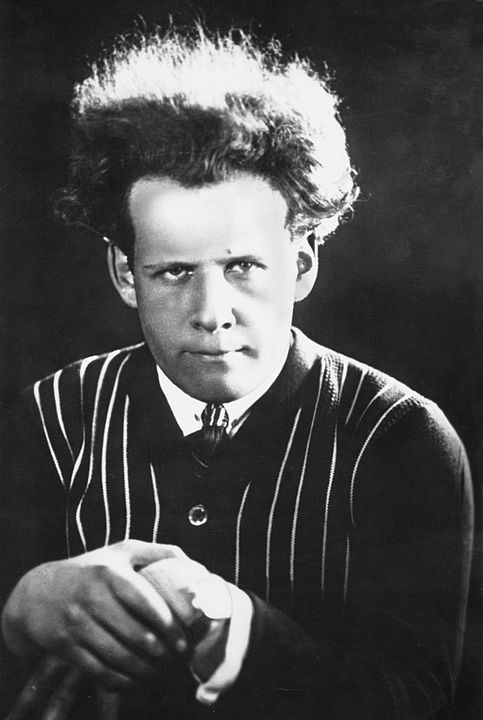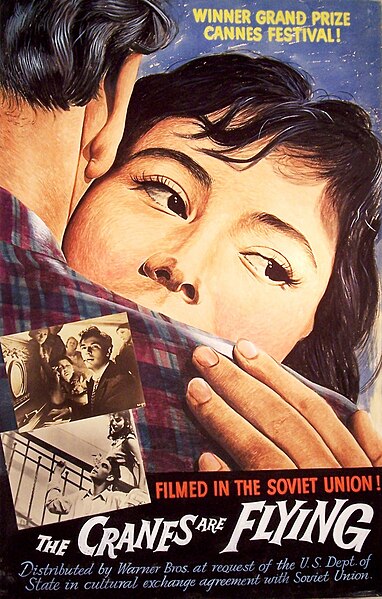From Propaganda to New Wave: The Shifting Face of Soviet Cinema

Soviet cinema evolved dramatically from its 1917 propaganda roots under the Bolsheviks to become a powerful artistic force. You'll find that early directors like Eisenstein revolutionized filmmaking through montage techniques, before Stalin's era enforced strict socialist realism. Under Khrushchev's Thaw, filmmakers gained creative freedom, exploring personal narratives and complex themes. Later, Brezhnev's period saw a shift toward commercial entertainment. This fascinating expedition through Soviet film history holds many more surprising metamorphoses.
The Birth of Soviet Cinema and Early Propaganda (1917-1929)
The Bolsheviks seized power in 1917 and quickly recognized cinema's potential as a revolutionary tool for mass communication. They took immediate control of the Russian cinema industry, which had already been growing since the Lumière brothers first brought their films to Moscow in 1896.
You'll find that Soviet authorities nationalized all film studios and distribution networks by 1919, altering them into centers for propaganda production. They knew that movies could reach the largely illiterate urban population more effectively than written materials.
Revolutionary reels showcased heroic workers, brave soldiers, and the triumph of socialist ideals over capitalism. These early propaganda films weren't just entertainment - they became powerful weapons in spreading the Revolution's message and shaping public opinion in favor of the new Soviet regime.
The newly formed Cinema Committee faced significant challenges including equipment losses, foreign blockades, and widespread power shortages while establishing control over the medium.
Eisenstein's Revolutionary Montage and Artistic Innovation
No single filmmaker impacted Soviet cinema more significantly than Sergei Eisenstein, whose revolutionary montage technique redefined the art of film editing in the 1920s. You'll find his innovative approach transformed the Soviet film industry by juxtaposing moving images to create powerful emotional responses in viewers.

Through his skilled manipulation of propagandistic images, Eisenstein demonstrated the power of film to shape public consciousness. His most famous works, like "Battleship Potemkin" and "Strike," showcased how montage could transcend simple realism to create deeper metaphorical meaning. While working within the constraints of the Russian Revolution's ideological demands, he managed to maintain exceptional creative freedom in his artistic innovation. His techniques didn't just influence Soviet cinema - they revolutionized the global understanding of film editing and continue to inspire filmmakers today. Much like the political cinema vans in Britain, his work exemplified how film could be wielded as a powerful tool for spreading ideological messages to the masses.
Stalin Era: Control, Censorship, and Socialist Realism (1930s-1953)
The artistic freedom of Soviet cinema's golden age came to an abrupt halt as Stalin's regime tightened its grip on the film industry in the 1930s. The Communist Party's power over film production transformed Soviet filmmakers into mere instruments of state propaganda, forcing them to abandon their innovative techniques for strict socialist realism.
The Soviet Union's control over cinema manifested in three key ways:
- Mandatory portrayal of idealized Russian society through heroic workers, soldiers, and peasants
- Systematic censorship of scripts and footage to eliminate any anti-Party sentiment
- Conversion of talented directors like Eisenstein from experimental artists to Party-approved storytellers
The film industry became a crucial tool in shaping public opinion, with every frame carefully engineered to reinforce Stalin's cult of personality and the Communist Party's vision for Soviet society. During World War II, the regime particularly emphasized wartime patriotism through films that depicted Soviet citizens as valiant defenders against fascist forces.
The Thaw Period: Creative Renaissance and Artistic Freedom
Stalin's death in 1953 triggered a striking shift in Soviet cinema, ushering in an era known as "The Thaw." Under Khrushchev's leadership, filmmakers broke free from socialist realism's rigid constraints and began exploring deeply personal narratives, complex human emotions, and artistic innovation.

Their impactful films, including The Cranes Are Flying and Ivan's Childhood, earned international recognition and critical acclaim. These works captured intimate character studies and bold artistic visions that struck a chord with audiences hungry for meaningful storytelling. However, this period of artistic freedom wouldn't last forever. When the Brezhnev era began, the government tightened its grip on cinema, favoring entertainment that maintained the status quo over experimental artistry.
You'll find this creative renaissance best exemplified in works by pioneering directors Mikhail Kalatozov, Andrei Tarkovsky, and Grigori Chukhrai.
Commercial Cinema and Cultural Shifts Under Brezhnev
While artistic freedom flourished during the Thaw, Brezhnev's rise to power marked a dramatic shift toward commercialized entertainment in Soviet cinema. You'll find this era characterized by widespread corruption and a growing preoccupation with material goods. Goskino's exploitation of public demand led to an emphasis on commercial films, which they cleverly labeled as "popular" to maintain ideological control.
Key developments in Soviet cinema during this period:
- Attendance figures revealed that just 15% of films generated 80% of ticket sales
- Bytovoy films like The Bonus (1975) examined complex worker motivations
- Eldar Ryazanov's light comedies, including Irony of Fate and An Office Romance, achieved box office success by balancing commercial appeal with ideology
This shift toward entertainment-focused cinema ultimately contributed to cultural stagnation, as creativity took a backseat to maintaining the status quo.
The Rise and Impact of Soviet New Wave Directors
Against the backdrop of commercial cinema's dominance under Brezhnev, a revolutionary artistic movement had already taken root during the Khrushchev Thaw. You'll find that directors like Andrei Tarkovsky, Alexei German, and Elem Klimov challenged the status quo with their aesthetically complex works, shifting away from state propaganda toward deeply personal storytelling.
Tarkovsky's magnum opuses, Solaris and Andrei Rublev, exemplify how the New Wave movement transformed Soviet cinema through philosophical exploration and spiritual themes. These individualistic filmmakers created morally complex narratives that resonated far beyond their era, despite facing increasing censorship during the conservative Brezhnev period.
While state control eventually curtailed their creative freedom, you can still see their lasting impression on modern cinema, as their bold artistic vision continues to inspire filmmakers worldwide.




